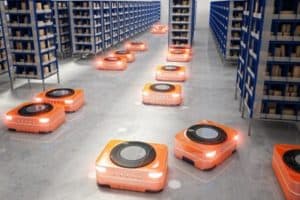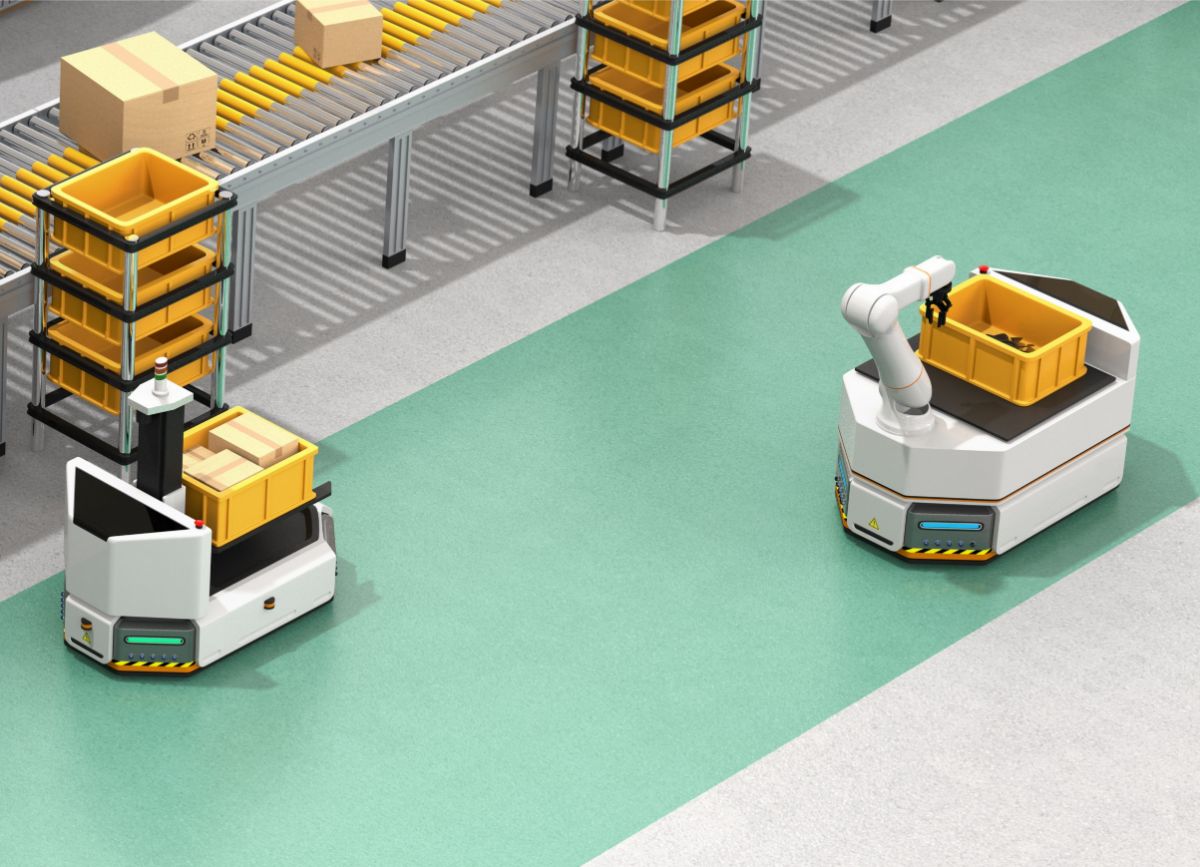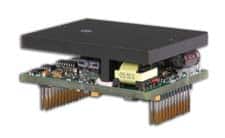
Now, new innovations in autonomous mobile robots (AMRs) are promising even more potential to manufacturers by offering new and exciting opportunities in automation.
With such sophisticated technology and infrastructure, AMRs rely on cutting-edge motion control solutions that can keep up with the demands of manufacturers.
ADVANCED Motion Controls has been manufacturing servo drives for automated guided vehicles (AGVs) for years and now offers a suite of EtherCat and CANopen motor controllers for AMRs.
Here, our experts would like to discuss the specifics behind AMRs, how they differ from AGVs, and why servo motors and controllers are essential to AMR operations. Once you have the whole picture, you can better understand the unlimited potential of both AGVs and AMRs for manufacturing and beyond.
What is an Autonomous Mobile Robot?

AMRs map their surroundings using cameras and lasers to recognize common obstacles and calculate the distance between them. They then employ dynamic path planning to define routes and coordinate the most efficient path forward. What’s truly exciting about AMRs is their ability to proactively move around obstacles and chart a more efficient route forward without the need to change layout or be recalibrated.
AMRs can also communicate directly with facilities and other AMRs in real time. On a macro scale, this can significantly reduce traffic jams, help with package tracking, and ensure the smooth flow of freight around a warehouse.
What’s the Difference Between AMRs and AGVs?
The difference between AMRs and AGVs is in the name. While AGVs require physical indicators, such as magnets and or wires, to follow a defined path, AMRs can chart out routes and destinations fully autonomously. While the terminology is considered different, an AMR could technically be considered an advanced AGV.

AGVs navigate through paths using a variety of different markers:
- Wires embedded in the floor that emit radio signals to AGVs
- Guide tape to follow a linear path
- Laser guidance to detect obstacles
AGVs were mostly designed to work alongside humans, while AMRs can replace many human tasks. AMRs also have more options for sensors, infrastructure, and computing power.
Depending on your application, AGVs and AMRs may be handy. Most manufacturers employ AGVs because they are easy to configure, adaptable to change, and can work alongside people. Many manufacturers are now turning to AMRs because they are also easy to configure, but can cost less because of reduced infrastructure requirements.
With that said, we thought we’d explain a little more about how servo drives are employed in AMRs to give them greater efficiency and reliability.
The Function of Servo Drives in AMRs

- Steering the vehicle
- Driving the wheels
- Lifting objects (e.g. the forks on forklifts or the bed on a cart)
PCB mount servo drives offer the ability to design for a more compact machine, while panel mount servo drives can be employed for special power, feedback and communication requirements. Vehicle mount servo drives offer high power and durability, making for a more robust and powerful machine.
Typical Specs

- Current: 20A to 100A or more
- Voltage: 24V to 200V or more
- Networks: EtherCAT, Modbus TCP/IP, and CANopen
Featured Products
- Embedded CANopen - DZCANTE-020L080
- Embedded EtherCAT - DZEANTU-040B080
- Vehicle Mount CANopen - DVC200A100
- Panel Mount - DPCANIE-100B080
Motion controllers for autonomous mobile robots offer the durability and efficiency required to build a truly autonomous machine. ADVANCED Motion Controls offers a sophisticated line of custom and off-the-shelf servo drives for both AGVs and AMRs.
Contact us today for more information or to place your order!
Do you like this article?
Get blogs like this delivered directly to your inbox!

